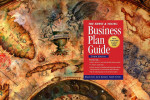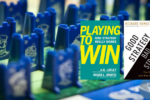The Art of the Start

The Art of the Start: The Time-Tested, Battle-Hardened Guide for Anyone Starting Anything by Guy Kawasaki
The Art of the Start is probably Guy Kawasaki’s most popular book among many he’s written on entrepreneurship, innovation, and leadership. Concepts from this book form the backbone of many of his presentations you’ll find on YouTube and popularized his “top ten” format used in his talks. The content in this book is largely repeated and expanded in Reality Check: The Irreverent Guide to Outsmarting, Outmanaging, and Outmarketing Your Competition
.
One of my favorite pieces of advice from this book is “don’t be afraid to polarize people”. He cites the example of the Scion xB, a car that either you love or you hate–there’s no in between. Kawasaki says that’s OK and that great products and services will alienate some people whether you like it or not.
Kawasaki likes to present his thoughts in irreverent, bite sized, inspirational best practices. His advices often boils down to authenticity, simplicity, and action. He’s an engaging speaker and uses many of the same themes in his presentations.
The first principles outlined in The Art of the Start are “Make Meaning” and “Make Mantra”. Kawasaki is big on principled action (starting a venture with the idea of changing the world, not making money). He has several pieces of advice related to positioning that essentially counsel simplicity and focus. He says “niche thyself” and use customer centric, specific, and long-lasting positioning. He offers a lot of advice around pitches, including his “10/20/30” rule: 10 slides, 20 minutes, 30 point font. Other pitch pointers include: explain yourself in the first minute, answer the “so what?” question, and “catalyze fantasy” (a core presentation secret of Steve Jobs). Kawasaki also gives some specific advice on writing a business plan: one person, preferably the CEO, should write the plan; focus on the executive summary; and “write deliberate, act emergent” (a tough balance to be sure). He stresses defining a business model (not just focusing on the technology) and not waiting for perfection (good enough is good enough).
He goes on to some specific tactical interests for entrepreneurs: bootstrapping, recruiting, raising capital, partnering, branding, and rainmaking. With respect to bootstrapping, he advises to “manage for cash flow, not profitability”, and building bottom-up forecasts. His one-liner for recruiting is to “hire infected people”.
In the video below, Kawasaki distills “The Art of the Start” into a top ten list format. (Slides for this presentation are here).
1. Make meaning
2. Make mantra
3. Roll the DICEE (Deep, Intelligent, Complete, Elegant, Emotive)
4. Define a business model
5. Weave a MAT (milestones, assumptions, tasks)
6. Niche Thyself
7. Follow the 10/20/30 rule
8. Hire infected people
9. Lower barriers to adoption
10. Seed the clouds
11. Don’t let the bozos grind you down






